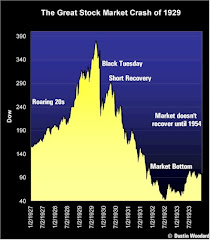In the NY Post there is an article about the difference between retirees in the public sector and those in the private sector. It highlights some of the rhetoric used to identify the difference.
Before you get too excited... I know I can hear you already... "but Bill this is an example from California how can it be relevant to us?" sorry but it happens here too.
It is a common public sector pension benefit called the pension buy-back.
Ottawa Example
At the start of the year the the new Auditor of the City of Ottawa had a special provisions written into his contract that gave him a $100,000 signing bonus. This bonus was used to buy-back a pension that he had with another level of government.
The move was severely criticized especially as it came from someone who had the job of protecting taxpayers interests. I blogged about it in Obscene taxpayer and pension abuse in Ottawa
Ontario Teacher Pension Plan buy-back example:
For example, in 2009, Nicole takes a leave of absence from her full-time teaching job to travel around the world. Her annual rate of pay immediately prior to her absence is $60,000. Here’s what it will cost Nicole to buy back the leave: $60,000 x 12.0% (contribution rate for 2009) = $7,200 + interest charges
We use the standard interest rates in effect from the end of your leave until your buyback is completed. For example, interest rates were 2.78% in 2009 and 1.90% in 2010. If your leave spans more than one school year, we also apply an escalation factor to your salary to account for year-over-year changes in employment information.
So in this example, a contribution of $7,200 would buy one year's pension worth $42,000. Also it will give an extra year of service boost to her total pension worth about 2% of her income. It will be for the rest of her life worth about another $36,000 over the next 30 years. It also allows her to retire one year earlier that her total working credits would allow.
How much pension buy-back can I sell you?
Bill Tufts
Fair Pensions For All










